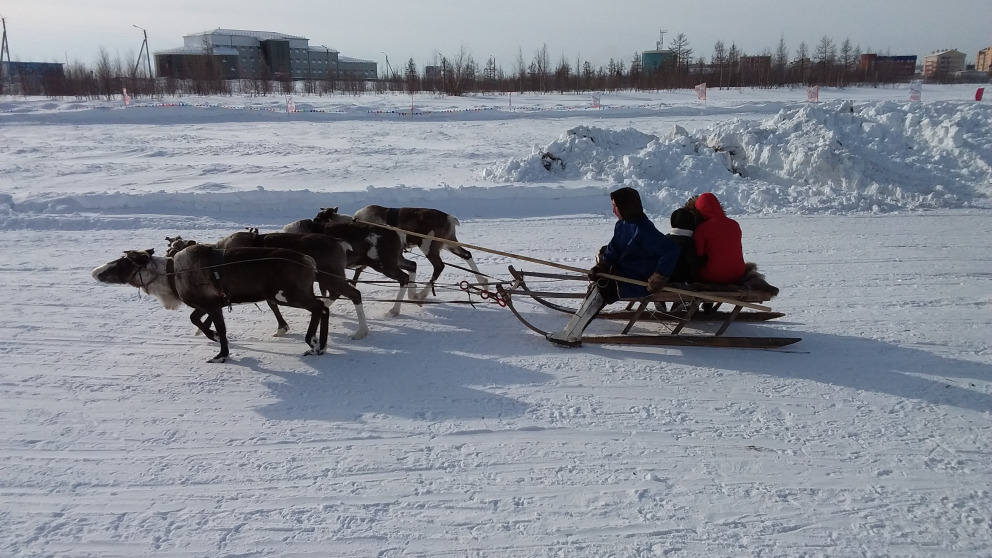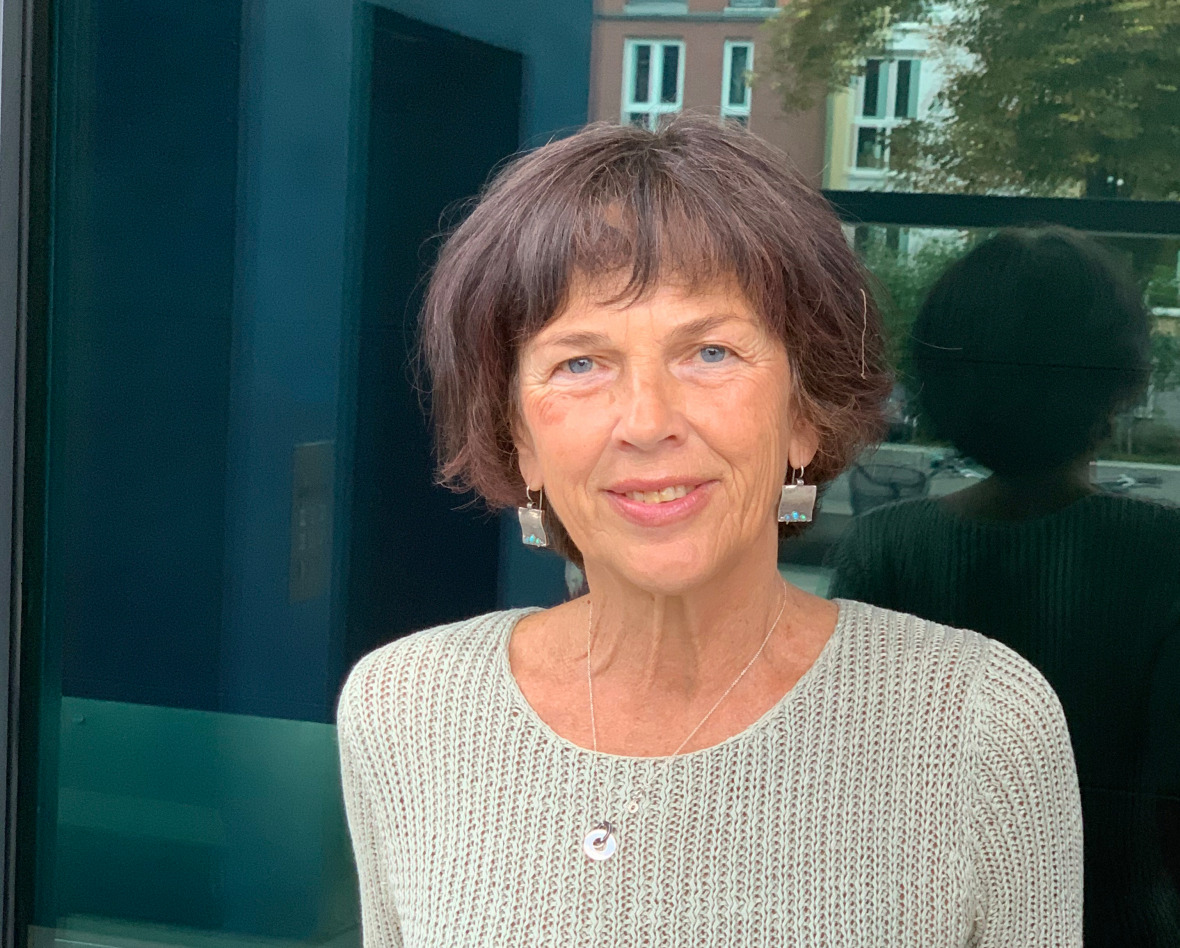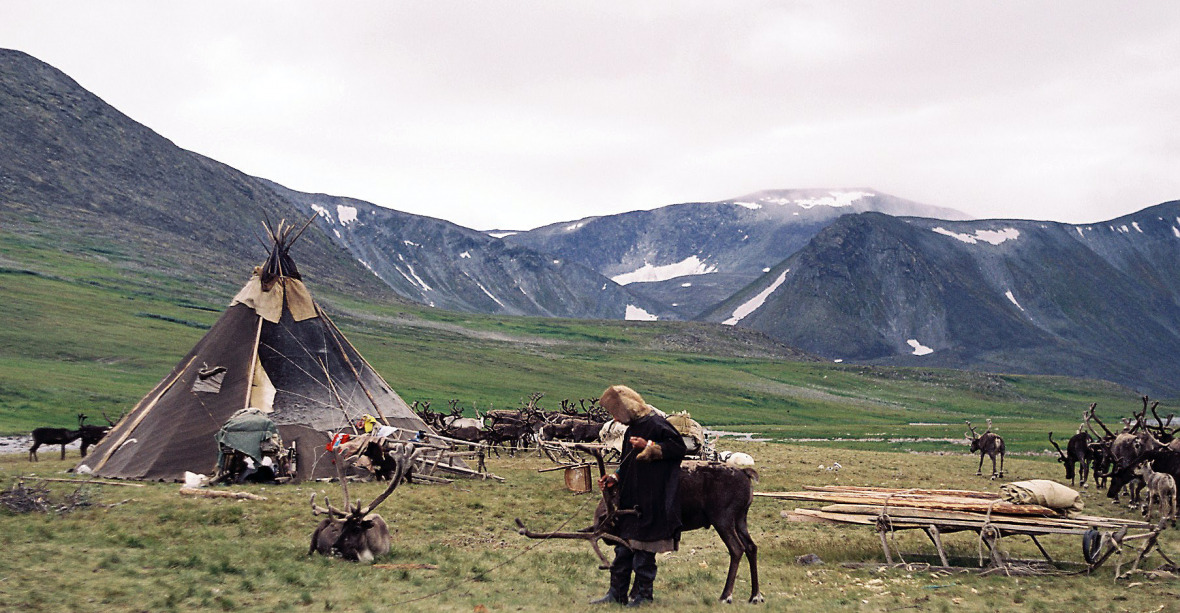Climate Change in the Arctic: Partnerships and Better Data Needed
11.11.2019

Climate change in the Arctic is unfolding twice as rapidly as in other parts of the world. This poses various challenges for the sustainable development of Northern communities and companies. The European research project Blue-Action evaluates the impact of climate change in the Arctic and develops new techniques to improve forecast accuracy. It focuses in particular on assessing the needs of end users in terms of climate data and services. Within this project, the IASS cooperates with the Primakov National Research Institute for World Economy and International Relations (IMEMO) and the organizational consultancy Foresight Intelligence. As part of a case study of the Yamal region in Russia, researchers are exploring the roles, perceptions and interests of various stakeholder groups in the sustainable development of the Arctic. Elena Nikitina, head of the Center for Global Economy at IMEMO, recently visited the IASS and provided insights into the formation of adaptive governance in the Arctic.

In the Blue-Action project, you are supporting Arctic regions in their efforts to adapt to climate change. What is your most important piece of advice?
Successful adaptation to climate change depends to a large extent on wise governance. This necessitates considering a complex set of drivers and consequences of climate change in tandem with other Arctic transformations, such as social, economic and institutional developments. The specifics of local contexts also matter; climate change will impact differently on different Arctic regions and communities, so diverse adaptation capacities and responses are required. There is no one-size-fits-all approach. Furthermore, it is particularly crucial that responses by various stakeholders are well coordinated. Interactions, cooperation and partnerships between stakeholders and across governance levels ensure polycentricity and the effectiveness of adaptive governance.
You are doing a case study in the Russian Yamal region. How did you initiate partnerships there and have you seen results yet?
The case study is being developed through a series of stakeholders’ workshops held in Potsdam and Moscow that bring together experts and practitioners from Russia and Germany, representing local actors, climate services providers, petroleum companies, small businesses, decision-makers from various levels, NGOs, the scientific community and more. This dialogue has resulted in a number of ‘participatory outcomes’, including the development of three scenarios mapping sustainable development pathways for the Yamal Region through to 2040, i.e. Gas Boom, Snow Queen and Reinventing Itself. Over the remaining lifespan of the Blue Action project, IMEMO intends to apply and test our findings in practice. We also hope to test some of our results and assess major trends and prospects for the emerging climate services market in the Arctic as part of the IMEMO research around socio-economic and policy scenarios.
In order to offer smart advice, you need a sound scientific basis. Do you have sufficient data on climate change in the Arctic, but also on the needs of Arctic populations?
Further research is required to gather sufficient data and strengthen linkages between the natural and social sciences. It is crucial that scientific uncertainties around future climate change be taken into account and capacities for adaptive governance and decision-making be developed. One of the challenges that we face is the unreliability of seasonal data. Over the past two decades, the seasonal forecasts for Russia provided by the Hydrometeorological Centre of Russia (Hydromet) have only had an accuracy of 58 to 81 per cent, for example. These inaccuracies hamper the efforts of utility companies to properly allocate energy resources and make their operations less cost effective. Clearly, better forecasting data is needed if local populations and businesses are to adapt successfully to the impacts of climate change. The rapidly emerging market for climate services in the Arctic also poses challenges. Identifying the needs and interests of a growing number of stakeholders will be crucial to addressing these.
Which stakeholders are you working with in the Blue-Action project and what is your strategy for assisting them with climate services?
The range of stakeholders and their needs as consumers of climate services has been expanding and includes local populations, the business and economic sectors, NGOs as well as research communities. All of these stakeholders have different needs: For example, the corporate strategies of major mining and oil and gas companies acting in the North depend on seasonal and longer-term predictions and assessments of risks from natural disasters. IMEMO has found that national and regional centres for climate services, offering products that are tailored to different groups of consumers, can be very helpful in preparing for the changes brought about by global climate vulnerability, especially in reducing the risks of and in responding to various natural disasters.
The Siberia wildfires of this summer are the most recent natural disaster to hit this region. Would climate service centres have helped to limit damage?
The possibility of incidents of arson notwithstanding, I believe that the overarching driver of the wildfire disaster in Siberia was “unwise” governance. The emergency response was stymied by gaps in damage assessments and delays in decision-making on the part of the responsible regional authorities, who chose to monitor the situation instead of taking a proactive approach to prevent the spread of the fires before they reached catastrophic scale. Proactive measures were deployed across only 3-4 per cent of the affected area! This sluggish response is at least partially due to the existing institutional regime, which is based on the UN’s International Strategy for Disaster Reduction. Under this framework, hazards are defined as disasters only when they pose a severe threat to people or infrastructure. Otherwise, in the wilderness they are considered to be part of the natural cycle. This approach is often applied in the Arctic Region, with problematic consequences.
What exactly went wrong in terms of risk prevention?
Alarmingly, in the case of the Siberian wildfires decision-makers neglected to take climate change factors into account. Climate and hydrometeorological data was not properly considered, for example. During the 2019 dry season average temperatures in the fire prone Irkutsk, Krasnoyarsk and Yakutia regions were 10 degrees higher than the three-decade average for those areas. Decision-makers also failed to properly consider various climate-related risk factors and variables or the short term forecasts for a range of indicators such as wind, moisture, temperatures, and anticyclone stability. Governance failures of this kind indicate that existing regimes – including norms and regulations – need to be upgraded. This problem has meanwhile been discussed in the State Duma and a special commission to assess the existing norms was established. It is expected that innovations in the regulatory framework for wildfires mitigation will be introduced, but we will have to see how they will be enforced. This example illustrates the rationale and importance of Blue Action research, which aims to identify the needs of consumers of climate services, these include decision-makers responsible for governance and disaster risk reduction. This research highlights the need for adaptive governance systems that include effective mechanisms for the supply of climate services.
Dr Elena Nikitina is the head of the Section for Global Economic Problems (Department of Global Economic Problems and Foreign Economic Policy) at the Primakov Institute of World Economy and International Relations, Russian Academy of Sciences (IMEMO). She is a political scientist with a particular focus on environmental governance, climate policy and sustainable development in the Arctic. She has been the lead author of the Adaptation Actions for a Changing Arctic (AACA) assessment reports of the AMAP, Arctic Council, and of the IPCC 4th and 3rd assessment reports. Over the last decade she has been involved in international research and expert assessments on environmental policy in the Arctic, including such projects as Blue Action (Horizon 2020); Disaster Diplomacy in the Arctic; Sustainability and Petroleum Extraction: Corporate and Community Perspectives in Northern Norway and the Russian Arctic (CSROil). She is an external expert on social sciences and humanities for the European Research Council, ERC.
Blue Action is supported by the EU Horizon 2020 Research and innovation programme under grant agreement No 727852

